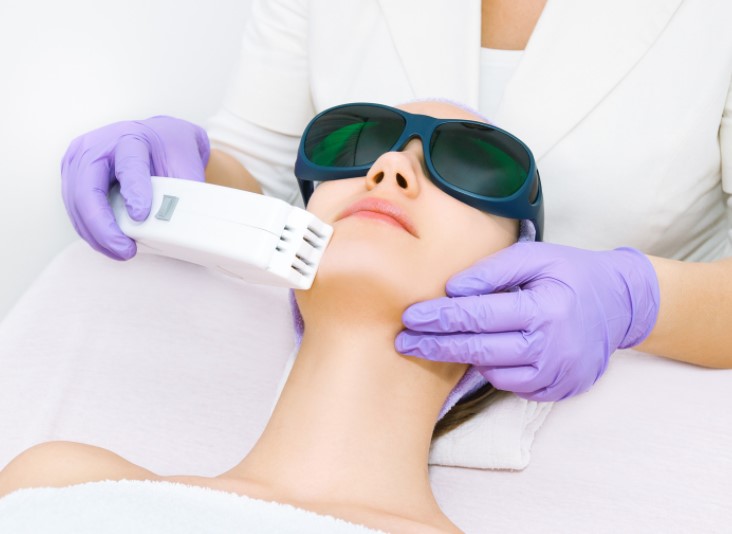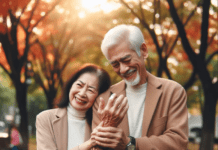What is cold laser therapy?
Cold laser therapy is a low-intensity laser therapy using low levels of light, stimulating healing.
Because the light levels are low enough not to heat tissue, this technique is known as “cold laser therapy.” This laser therapy is less effective than other forms, such as killing tumors or coagulating tissue.
The tissue being treated is heated by aesthetic and surgical lasers. Cold laser therapy doesn’t, hence the name.
Also known as:
- Low-level laser therapy (LLLT).
- Low-power laser therapy (LPLT).
- Soft laser biostimulation
- Photobiomodulation
How cold laser therapy works?
Different wavelengths and low-level outputs of light are used to target a specific area during this procedure. The light is absorbed by the body tissue. The near-infrared and red light causes a reaction. Damaged cells then respond with a physiological response that promotes healing.
The wavelengths used to treat superficial tissue are 600-700 nanometers (nm). Wavelengths between 780 nm and 950nm can be used to penetrate deeper.
The procedure is noninvasive and painless. You won’t hear any sound, vibration, or heat. The average treatment takes just a few minutes.
What is cold laser therapy?
Doctors, dentists, and physical therapists all use cold laser therapy in various ways. Cold laser therapy is used primarily for tissue repair and the relief of pain as well as inflammation.
Minor injuries and sprains
Cold laser therapy is usually used in sports medicine and physical therapy to treat minor injuries and sprains such as:
- ligament sprains
- muscle strains
- tendonitis
- Bursitis
- Tennis elbow
- Neck pain
- Lower back pain
- Knee Pain
- Pain from muscle spasms
It can also be used to reduce swelling and promote the healing of joints and soft tissues.
Inflammation
Cold lasers are used by dentists to treat inflammation in the mouth and heal ulcerations. It is used by doctors to treat inflammation from rheumatoid and other chronic autoimmune conditions.
Aches and Pains
Cold laser therapy is used in pain clinics to treat people suffering from chronic or acute pain, such as fibromyalgia or carpal tunnel syndrome.
Skin rejuvenation
To promote skin rejuvenation, cold laser therapy is used. It is used by dermatologists to address a variety of skin conditions, including:
- scars from acne
- psoriasis
- Burns
- Vitiligo
- Edema is swelling of the skin
- rashes and dermatitis
Wound healing
Cold laser therapy can also treat wounds difficult to heal, such as wounds related to diabetes.
Acupuncture
An acupuncturist uses cold laser therapy to treat clients who are not comfortable with needles. Low-level laser beams can stimulate your Acupoints in the same manner as needles but without needing to penetrate your skin.
Future uses
There are many possibilities for cold laser therapy that could be used in new ways. It is being studied by researchers in the hopes of treating a wide range of conditions and ailments, including:
- Traumatic brain injury (TBI).
- Spinal Cord Injury
- Alzheimer’s Disease
- Parkinson’s Disease
Other Methods Of Light Therapy
Natural and artificial light have been used throughout history for healing purposes. Since the time of the ancient Greeks, sunlight has been used to heal many ailments. Being the father of modern medicine, Hippocrates recommended that people be exposed to the sun for healing purposes.
Bright light and fresh air were often prescribed in the late nineteenth century and early twentieth centuries for many mood- and stress-related disorders. Before World War II, hospitals had solariums or sunrooms that allowed patients to spend their time in the sunlight.
Light therapy was first described in medical literature in 1980 to treat seasonal affective disorder (SAD). It is now widely accepted as a first-line treatment for the condition.
BENEFITS
SAD is a type of depression that occurs when there are fewer daylight hours in the northern latitudes. This can be treated with light therapy. Sometimes, it is used to treat sleep-related disorders like jet lag and insomnia.
Light therapy is effective in treating non-seasonal depressions like bipolar disorder. In 9 of 10 randomized controlled trials, bright light was found to reduce depressive symptoms by 12%-35% compared with placebo.
Light therapy is a good option for treating depression and other symptoms such as SAD. Light therapy is more effective than medication, relieving depressive symptoms in as little as two to fourteen days.
This compares with the average four to six weeks of medication. Light therapy is much more tolerated than antidepressants which can cause nausea and concentration problems. Although there are some side effects of light therapy, they are not enough to stop the therapy.
You can also use light therapy for other purposes, such as:
- For skin disorders, full-spectrum/ultraviolet light therapy (UV) is recommended. This subtype of light therapy is used to treat skin conditions, rashes, and jaundice.
- Cold laser therapy. Laser acupuncture uses low-intensity laser light beams to treat skin conditions such as tendinitis and pain.
- Colored light therapy. Colored light therapy uses different colored filters placed over a light source to produce therapeutic effects. The patient is then exposed to the colored light using either a floodlight or a beam of light focused on the specific area of the disease.
DESCRIPTION
Home light therapy is the most common method of light therapy. A lightbox, a portable light therapy device, is the most popular.
A lightbox can be full-spectrum, where the lighting element includes all wavelengths of natural light (including UV rays) or bright, which emits only non-UV white light. You can mount the box upright on a wall or tilt it toward a table.
The patient must sit in front of the box for a set time, ranging from 15 minutes up to a couple of hours. Initial sessions usually last between 10-15 minutes and 20 minutes for patients just beginning the therapy.
SAD patients may receive light therapy sessions twice a day. Others only need to be treated once a week. The individual patient’s physical and lifestyle needs will determine the time and frequency of treatment.
Light therapy is often prescribed to treat SAD. It usually begins in fall as the days become shorter and continues through winter and early spring. SAD patients with a history of depression are more likely to set a schedule or pattern for their symptoms and begin treatment before they start.
A slanted light box is designed to focus light on the table that it sits on. Patients may use this light to read or to do other sedentary activities during therapy. The upright lightbox should be viewed from the side.
Patients who use it must look at the source of light occasionally, but not directly. These lightboxes have light sources that range from 2,500 to 10,000 Lux (in contrast to indoor lighting, which is typically 300 to 500 Lux; on a sunny day, it is approximately 100,000 lux).
Lightboxes are available for purchase, starting at $200 and ending at $500. The fixtures can also be rented by healthcare suppliers and providers of healthcare services. Patients can rent the fixtures to try out the therapy before they invest.
There have been several new lightboxes made recently. Dawn simulators are lights or fixtures that can be programmed to gradually turn on from dim to bright to mimic the sunrise. These devices are often prescribed to people who experience difficulty getting up in the mornings due to SAD symptoms.
A light visor, also known as a light visor, is a device that allows for greater mobility and independence during treatment. The visor acts as a light source and is worn around the crown of your head like a sunvisor. Before using a light veil, patients with eye problems or other medical conditions should consult their doctor.
PREPARATIONS
Patients with sensitive skin should use sunscreen before spending extended periods of time in front of full-spectrum lightboxes.
PRECAUTIONS
Ophthalmologists should be seen by patients with eye problems before and after light therapy. Patients taking photosensitizing medication should consult their healthcare provider before starting treatment.
UV rays can be emitted from the lightbox. Patients with sensitive skin conditions should be examined by a healthcare professional before beginning phototherapy.
To get the best results, patients who are beginning light therapy for SAD might need to adjust their phototherapy sessions’ lengths, frequency, and times.
Patients should inform their healthcare provider about their progress and how their depression is progressing. Sometimes, it may be possible to recommend additional treatment for depression, such as antidepressants or herbal remedies and psychotherapy, in addition to light therapy.
SIDE EFFECTS
Light therapy can invoke side effects such as dry eyes, headaches, fatigue, sunburn eyestrain, eyestrain, headaches, insomnia, and fatigue. These side effects can mostly be controlled by changing the duration and timing of light therapy sessions.
You can reduce the effects by using strong sunblock, eye and nose drops, and a strong sunblock. Studies have shown that light therapy has no adverse effects on the eyes of people who have undergone long-term treatment.
Hypomania is a condition in which a small number of light therapy patients experience an exaggerated or hyper elevated feeling. This side effect can be managed by adjusting the frequency and length of light therapy sessions.
RESEARCH AND GENERAL ACCEPTANCE
Traditional and complementary medicine both use light therapy as a treatment for SAD. Although the exact mechanism of light therapy’s effectiveness is not known, it has been suggested that the bright light used in light therapy might be used to adjust the body’s internal clock or circadian rhythms.
Some believe that light triggers serotonin production, a neurotransmitter linked to depression, or affects the body’s melatonin production. These hormones may also be related to circadian rhythms.
In a 2015 systematic review, the Cochrane Library found no evidence to support light therapy as a preventive treatment for SAD patients. The limited sample size and methodological limitations of the only available study have prevented review authors from concluding the effects of light therapy on SAD.
Because there is not much evidence to support light therapy over other preventive options, it should be decided according to the patient’s preferences. Light therapy might not be right for everyone suffering from SAD.
This is because some people respond differently to light therapy. The 2016 systematic review of light therapy for sleep disorders showed that it was effective.
However, the effect might not be as significant as expected. This suggests that light therapy could be combined with other measures to improve quality sleep.
In clinical practice, wide-spectrum UV light therapy for skin conditions such as psoriasis can also be considered a standard treatment option.
Other light-related procedures, such as cold laser therapy or colored light therapy, are not widely accepted; hence there have been very few scientific studies.
TRAINING and CERTIFICATION
SAD is treated by psychologists, psychiatrists, and other mental health professionals who prescribe light therapy. This treatment is also offered by light therapists and holistic healthcare professionals.
These professionals must have a license in some states. Individuals should verify with their state board for health that they are licensed. A dermatologist should prescribe light therapy for skin conditions.








